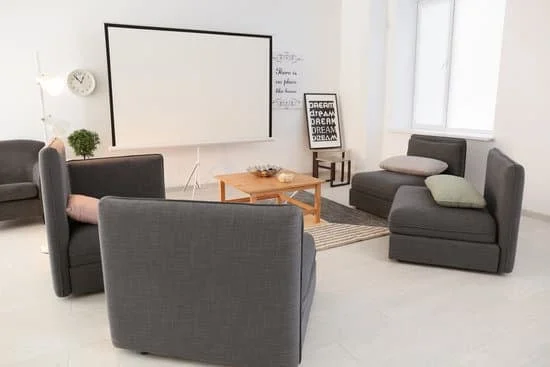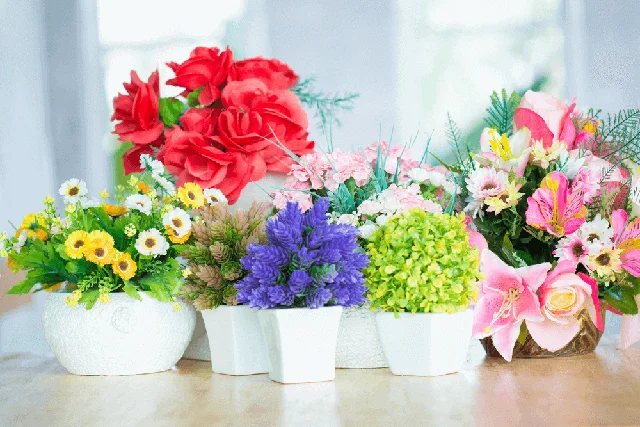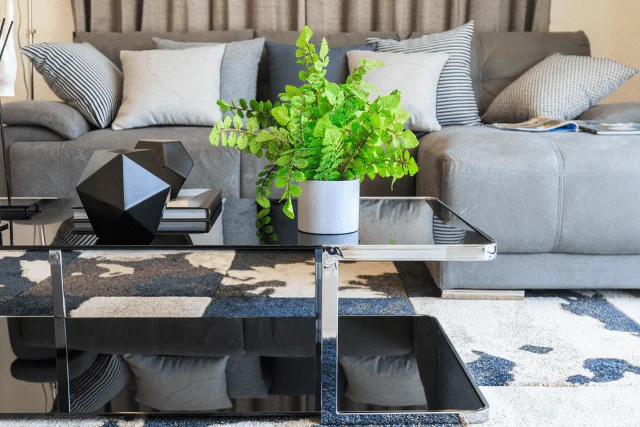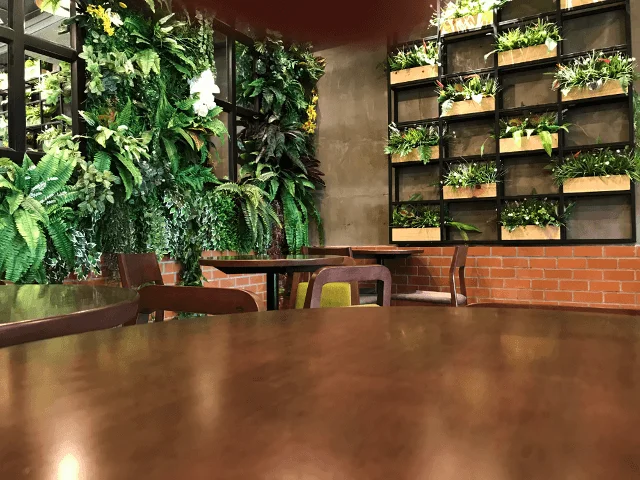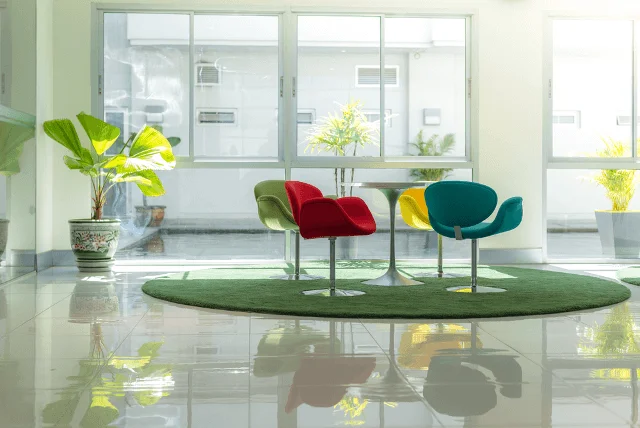Are you looking to add a touch of greenery to your home decor without the hassle of maintaining real plants? In this article, we will explore the growing trend of using artificial plants as a convenient and low-maintenance option for adding natural elements to your interior design.
From the benefits of artificial plants over real ones to tips on choosing the right type and creating personalized touches, we will guide you through the process of making your own beautiful artificial plants for home decor.
In recent years, the popularity of artificial plants for home decor has been on the rise, offering homeowners an easy way to incorporate greenery into their living spaces without the need for constant watering and maintenance. With advancements in technology, artificial plants now closely resemble their real counterparts, making them a practical and visually appealing alternative.
The benefits of using artificial plants go beyond their low maintenance requirements. They are also ideal for those with allergies or for homes with pets that may be sensitive to certain types of foliage. Additionally, they can thrive in areas where natural light is scarce or where real plants struggle to survive. Join us as we delve into the world of DIY artificial plant creation and discover how you can elevate your home decor with these versatile and charming accents.
Choosing the Right Artificial Plants
When it comes to choosing the right artificial plants for home decor, there are a few important factors to consider. The first step is to determine the style and aesthetic you’re going for in your home. Are you looking for a modern, minimalist look or a more traditional, lush feel? Consider the color scheme and overall theme of your home decor to ensure that the artificial plants you choose will complement the space.
Tips on Selecting Artificial Plants
One important aspect to consider when selecting artificial plants is the size. Take measurements of the space where you plan to place the plants and consider how much visual impact you want them to have. Additionally, think about the type of plant that would best suit your home decor.
Do you prefer flowering plants, succulents, or leafy greens? Different styles of artificial plants can evoke different moods, so choose based on what fits best with your personal taste and home aesthetic.
Considerations for Style and Color
Another key consideration is the style and color of the artificial plants. Pay attention to details such as leaf shape, texture, and color variation to ensure that they look realistic. Consider whether you want a cohesive color scheme or if you’d like pops of vibrant colors in your artificial plant selection.
Keep in mind that while some artificial plants come in bold, eye-catching colors, others are designed to mimic real plants with natural tones. By carefully considering these elements when choosing artificial plants for your home decor, you can create a cohesive and visually appealing look that enhances your living space.
Whether you opt for lifelike greenery or colorful blossoms, there are numerous options available when it comes to selecting artificial plants for your home decor. Ultimately, choosing the right artificial plants is about finding pieces that resonate with your personal style and contribute to the overall ambiance of your living space.
By following these tips on selecting artificial plants based on size, style, and color considerations,you can ensure that your choices enhance the beauty of your home while reflecting your individual taste.
Materials Needed for Making Artificial Plants
List of Materials Required
To create artificial plants for home decor, you will need a few essential materials. These include silk or plastic foliage, floral tape, stem wire, wire cutters, hot glue gun and glue sticks, foam balls or blocks, and a decorative pot or vase. You can easily find these items at your local craft store or online.
Where to Purchase the Necessary Materials
When it comes to purchasing the materials needed for making artificial plants, there are several options available. Craft stores such as Michaels, Hobby Lobby, and Joann Fabrics carry a wide range of silk flowers, foliage, and greenery. Additionally, online retailers like Amazon and Etsy offer a variety of artificial plant-making supplies that can be conveniently delivered to your doorstep.
Tips for Finding Quality Materials
When selecting materials for creating artificial plants for home decor, it’s important to seek out high-quality items that closely resemble the real thing. Look for realistic-looking silk leaves and flowers with natural colors and textures. Choose durable stem wire and floral tape that will provide stability and support to your handmade plants. By investing in quality materials, you can ensure that your artificial plants will look lifelike and stand the test of time in your home.
By using the right materials and paying attention to detail when creating artificial plants for home decor, you can achieve stunning results that enhance the aesthetic of any room in your house.
Step-by-Step Guide to Making Artificial Plants
Making your own artificial plants for home decor can be a fun and creative way to add a touch of nature to your living space. Whether you have a knack for crafting or simply enjoy DIY projects, creating your own artificial plants allows you to customize the design and style to perfectly complement your home decor. Here’s a step-by-step guide on how to make artificial plants for home decor:
1. Choose Your Base: The first step in making artificial plants is selecting the base for your plant. This could be a foam ball, PVC pipe, or any other material that you can shape into the desired form of your plant.
2. Adding Foliage: Once you have your base, it’s time to add the foliage. Depending on the type of plant you want to create, choose the appropriate greenery and flowers. Secure the foliage onto the base using floral tape or hot glue.
3. Creating Realistic Texture: To give your artificial plant a realistic appearance, consider adding texture to the leaves and petals using fabric paint or by lightly brushing them with acrylic paint.
4. Assembling the Plant: After adding all the foliage and texture, it’s time to assemble your artificial plant by attaching the stems and leaves together using floral wire or glue.
5. Add Finishing Touches: Once assembled, take some time to fluff out the leaves and adjust their placement to achieve a natural look.
By following these steps, you can create beautiful artificial plants that will enhance your home decor while reflecting your unique style and personality. So gather your materials and get ready to unleash your creativity by making stunning artificial plants for every room in your home.
Adding Personalized Touches
Once you have created your own artificial plants for home decor, the next step is to add personalized touches to make them uniquely yours. One way to customize your artificial plants is by adding decorative elements such as ribbons, bows, or small ornaments that match your home decor style. You can also consider painting the pots or containers of your artificial plants to coordinate with the color scheme of the room.
Another way to personalize your artificial plants is by incorporating unique textures and materials. Consider using different types of fabric or crafting materials to create a one-of-a-kind look for your plants. Adding faux moss, pebbles, or tiny LED lights can also enhance the visual appeal of your artificial plants and make them more realistic.
To truly make your handmade artificial plants stand out, consider adding a personal touch such as handmade flowers or leaves. You can use a variety of crafting techniques such as origami, paper quilling, or fabric manipulation to create customized flowers and foliage for your plants. This will not only add a special touch to your decor but also showcase your creativity and craftsmanship.
| Materials | Additional Tips |
|---|---|
| Fabric or crafting materials | Consider using upcycled materials for a sustainable touch |
| Paints and decorative elements | Look for inspiration in nature for color combinations |
| Crafting tools (scissors, glue gun, etc.) | Take time to experiment with different textures and designs |
By customizing your artificial plants, you can create stunning pieces that seamlessly blend with your home decor while showcasing your unique style and personality. Whether it’s through decorative accents, texture variations, or handmade embellishments, the possibilities are endless when it comes to personalizing artificial plants for home decor.
Maintenance and Care Tips
Artificial plants are a popular choice for home decor due to their low maintenance and long-lasting nature. Once you have created your own artificial plants, it is important to know how to care for them properly to ensure they continue looking fresh and vibrant. Here are some tips on how to maintain and care for your handmade artificial plants:
- Regular Dusting: Just like real plants, artificial plants can accumulate dust over time. To keep them looking their best, simply dust the leaves and stems with a soft cloth or duster on a regular basis.
- Cleaning Methods: If your artificial plants need more than just dusting, you can use a mild soap and water solution to clean them. Gently wipe down the leaves and allow them to air dry completely before putting them back on display.
- Storage Tips: When not in use, store your artificial plants in a cool, dry place away from direct sunlight. This will help prevent any fading or damage over time.
By following these simple maintenance and care tips, you can ensure that your handmade artificial plants continue to enhance your home decor for years to come.
In addition to regular upkeep, it’s also important to consider where you place your artificial plants within your home. Keep them away from heating vents, as excessive heat can cause the materials to deteriorate over time. Also, avoid placing them in areas that receive direct sunlight, as this can cause the colors of the leaves and flowers to fade.
With proper maintenance and thoughtful placement, you can enjoy the beauty of your handmade artificial plants for a long time while adding a touch of greenery to your living space.
Creative Ways to Display Artificial Plants
Artificial plants are a great way to add a touch of greenery to your home decor without the hassle of maintaining real plants. Once you have successfully made your artificial plants, it’s time to get creative in how you display them in your home. There are numerous innovative ways to showcase and incorporate these handmade plants into different rooms and spaces.
One creative way to display your artificial plants is by incorporating them into wall art. You can create a unique and eye-catching living wall by arranging various artificial plants on a wooden frame or mounting them directly onto the wall. This not only adds a natural and refreshing element to the room but also serves as a stunning focal point for any space.
Another idea is to use unexpected containers or vessels to hold your artificial plants. This could include repurposing old teapots, tin cans, or vintage baskets as plant pots. Get creative with your containers and consider the overall aesthetic of the space where they will be displayed. By doing so, you can add an interesting and personalized touch to your home decor.
Lastly, consider incorporating your handmade artificial plants into existing home decor elements such as bookshelves, mantels, or even bathroom shelving. Mixing them in with other decorative items helps create visual interest and brings a sense of nature indoors.
| Display Method | Description |
|---|---|
| Living Wall | Create a striking living wall by arranging artificial plants on a wooden frame or directly on the wall. |
| Repurposed Containers | Use unconventional items like teapots or vintage baskets as containers for your artificial plants. |
| Incorporating into Home Decor | Add artificial plants into existing decor elements like bookshelves or mantels for added visual interest. |
Conclusion
In conclusion, making artificial plants for home decor can be a rewarding and enjoyable DIY project that adds a personal touch to your living space. The growing trend of using artificial plants over real ones has paved the way for creativity and customization in home decorating, allowing individuals to showcase their unique style and personality. By following the step-by-step guide and utilizing the right materials, anyone can create lifelike artificial plants that seamlessly blend into their home decor.
It’s important to remember that choosing the right type of artificial plants is crucial in achieving a realistic appearance. Considerations for size, style, and color should be taken into account to ensure that the artificial plants complement your existing decor. Additionally, adding personalized touches can further enhance the uniqueness of your handmade artificial plants, making them even more special and tailored to fit your individual taste.
Ultimately, maintaining and caring for your artificial plants is just as important as creating them. With proper cleaning methods and storage tips, you can ensure that your handmade artificial plants continue to look fresh and vibrant for years to come. Finally, embracing the creativity of DIY artificial plants allows you to enjoy the satisfaction of crafting something beautiful for your home while expressing your own creativity in an innovative way.
Frequently Asked Questions
How Do You Make Fake Plant Decor?
Fake plant decor can be made by using various materials such as silk or plastic foliage, real wood trunks or branches, and foam for the base. These materials are then assembled and shaped to mimic the appearance of real plants.
What Materials Are Used to Make Fake Plants?
The materials used to make fake plants include silk or plastic for the leaves and flowers, real wood for trunks or branches, foam or other synthetic materials for the base and structure, and sometimes even natural fibers for added texture and realism.
How Do You Manufacture Artificial Plants?
Artificial plants are manufactured by first designing the shape and structure of the plant using wire frames or molds. Then, silk or plastic foliage is added to create the leaves and flowers. Real wood may be used for trunks or branches to add authenticity. The pieces are assembled together and carefully crafted to resemble natural plants.

I’m thrilled to be your companion on this exciting journey through the world of home decor and design. With a passion for turning houses into homes and a keen eye for the finer details, I’m here to help you transform your living spaces into beautiful, functional, and meaningful havens.

